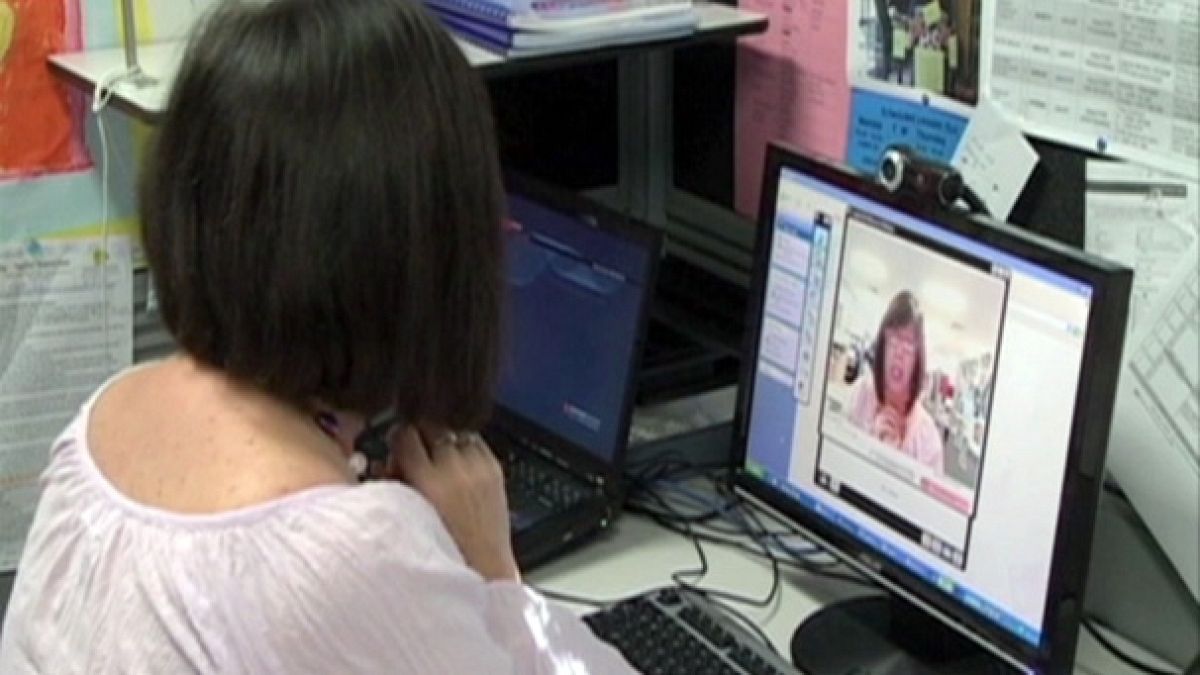For young people in remote or isolated communities getting an education can be a major challenge. In times past some would simply have missed out on schooling. But in this internet age, distance is no longer an obstacle to learning. In Scotland’s Orkney Islands, a hi-tech bridge links students to teachers on the mainland.
The Orkney Isles are scattered across the furthest north coast of the country. The population is geographically scattered and isolated from the mainland, especially in winter, making access to education tricky. The University of the Highlands and Islands in Scotland met this challenge by creating a series of small learning centres connected to a virtual hub.
Video-conferencing allows students and teachers in different locations to connect in real time using broadband, microwave, satellite links, and WiFi. So, for example, a lesson in Scottish studies, can be sent from Orkney to all the other locations on the network.
With this technology, the University can chose the best locations for each lesson to originate from. For instance Orkney is a great place for archaeology, being full of ancient sites and prehistoric ruins.
There is a strong community feeling in Orkney but in the past, many young people felt they had to leave the islands in order to get an education. Now they can stay.
There are few more isolated communities than those in the Amazonian rainforests of Brazil. For some the nearest school can be several hours away. It has taken a long time to resolve this problem, but educators have now found a solution, and it comes from above.
The Rio Negro flows through the Amazon jungle where even the shortest journey takes hours and sometimes even days. So going to school in the conventional sense is practically impossible. Schools in urban areas are too far away.
But lessons like physics, history and English - all the subjects on a normal secondary school curriculum – are broadcast to distance learners. Many of the pupils are at work all day so they do their education in the evenings.
If the pupils have any questions, they can ask a teacher. They also have internet so they can talk to their teachers live, using a webcam.
The lessons are broadcast from Manaus, by around 40 different teachers. They are received by 549 schools all across the Brazilian state of Amazonas. The annual budget for this project is 14 million euros. The teachers don’t work in classrooms, but in television studios with cameras, sets and technicians. There is not a pupil in sight.
In fact, there are around 30,000 pupils successfully learning by distance. It is so successful, that countries like Canada and Australia are looking to see what lessons they can learn from it.
Space hardware and video conferences are not the only ways to link teachers with faraway students. The internet is also proving a very useful tool.
In Australia, the Brisbane School of Distance Education provides “flexible learning” for 3,400 pupils worldwide.
The school’s Neil McDonald explained: “Initially, distance education was designed to provide education for medical students and families in remote areas. But with the evolution of technology, we can give education to anyone, anywhere and anytime.”
Although there are no regular on site classes, a staff of 190 teachers delivers learning programmes in an active e-learning environment that incorporates lessons using Telelearning, Netmeeting, e-mails or website based help sheets.
Tabitha Brown lives more than 250 kilometres away from Brisbane: “I think it’s really scheduled [well-organised]. At actual high school you just sit there and listen and take notes. It’s easy. Here, you have to do all the work yourself, and you don’t have people to explain things.”
Now this programme is used by students in suburban homes, caravans, tents, farms and yachts.


